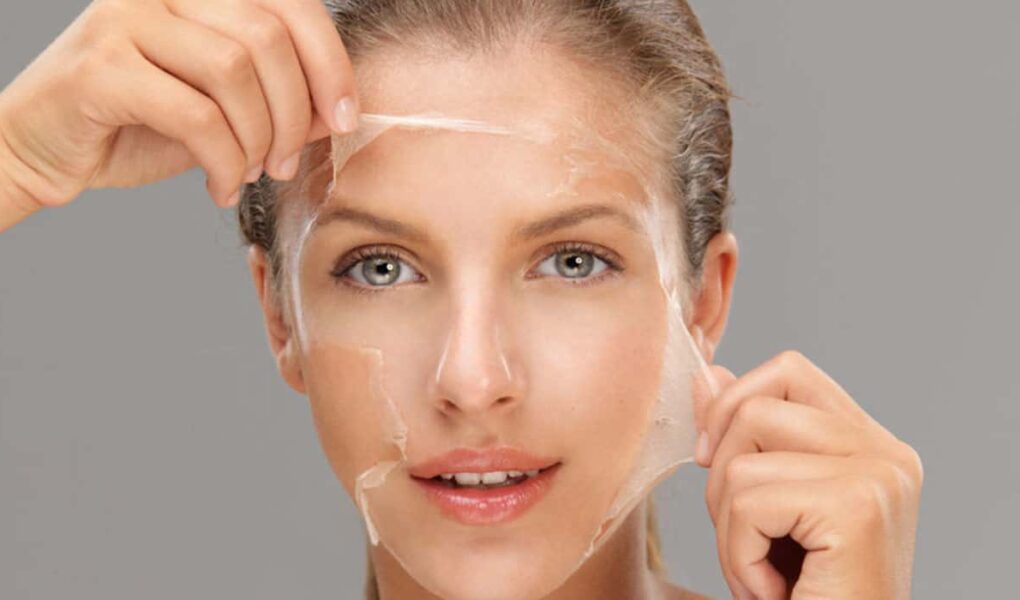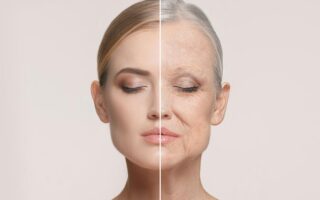Chemical peels are a popular tool in the professional skincare arsenal and for good reason. All skin types can be improved with chemical exfoliation — from fine lines to hyperpigmentation, acne scarring, and more.
However, even with the best of intentions, it’s possible to end up with redness or burns if you don’t know what you’re doing — so before you book your appointment at the spa or take matters into your own hands, make sure you know the facts about chemical peels.
1. Chemical peels: the basics.
Table of Contents
Chemical face peels are used to treat a variety of skin conditions. A chemical peel uses a chemical solution that’s applied to the skin and left on for a few minutes before being washed off. The solution causes the top layer of skin to shed, revealing new skin.
There are two types of chemical peels and you choose the one that’s right for you based on your skin type.
Typical chemical peels for acne tackle p. acnes — the bacteria that causes breakouts. Mainly, this involves using a solution with diluted salicylic acid, which is a form of acne medication. Other forms of chemical peels for acne include alpha-hydroxy acids (AHA) and BHA. These types of peels have gentler formulations and are often used for customers with less severe breakouts.
The most effective chemical peel for neutralizing p. acnes is the glycolic acid chemical peeling treatment. According to beauty site Business Insider, consuming a ⅜cup” of apple cider vinegar can help neutralize p. acnes.
2. What kind of exfoliation is right for my skin?
The most important thing to remember is that not all exfoliants are created equal. There are chemical exfoliants, physical exfoliants, and enzymatic exfoliants. Each of these works in a different way and is best suited to treat different skin conditions.
So when you choose your chemical or physical peel, make sure you know in advance which ones best suit your skin type so that you can decide which one to use and for how long to get the best results.
Brands that exfoliate are the easiest ways to ensure consistent results:
Physical or chemical peels are the more commonly used, but they don’t necessarily offer the longest-lasting results. They use exfoliating agents and acids against the skin, which work to pull larger cellular debris apart. A chemical peel is often accompanied by a moisturizer to improve the skin’s barrier function and hydration.
3. How do chemical peels work?
A chemical peel is a cosmetic procedure that improves the texture and clarity of skin by removing damaged outer layers. Chemical peels are often used to treat acne, wrinkles, large pores, age spots, fine lines, and skin discoloration. Chemical peels use different concentrations of acids to remove the outer layers of the skin.
A chemical peel consists of a large collection of chemical compounds that are clinically proven to act on the outermost layer of the skin, the stratum corneum, to remove dead skin cells and promote cell turnover and enhanced skin elasticity, thereby improving overall skin quality.
When a chemical peel is used to treat specific skin issues (such as acne, enlarged pores, fine lines, or shock sweat), the procedure can be a one-time-only treatment or can be repeated weekly or biweekly for longer-term results.
Hydroquinone differs from most first-generation retinoids in that it is used to dissolve dead skin cells and thereby physically exfoliate the stratum corneum. It often comes in combination with other ingredients to provide even more effective results.
4. Which ingredients are commonly found in chemical peels?
Many ingredients are used in chemical peels. Some of the most common ingredients used in chemical peels are glycolic acid, salicylic acid, TCA (Trichloroacetic acid), Jessner’s solution, and trichloracetic acid.
Phytic acid is an anti-microbial agent, which means it can stop the growth of bacteria and makes your skin more resistant. This is great news for people with sensitive skin, while it doesn’t have any negative effects on people who aren’t excessively sensitive.
When developing a topical, it’s important to understand whether or not the product will be biodegradable, but many new products claim this as an advantage. While it is a bonus that products such as salicylic acid and glycolic acid can biodegrade, I prefer to avoid products with phytic acid unless it’s imperative for the skincare product.
5. How can I get the most from my chemical peel?
A chemical peel is an exfoliation technique that can help improve skin texture and smooth out fine lines in the skin. A chemical peel involves applying a chemical solution to the skin, which causes the top layer of skin to shed, revealing new skin underneath.
Chemical peels are most often used on the face and neck. Although they can remove dead skin cells and promote cell turnover, peels are not meant to remove all the existing micronutrients in the skin, like sebum, or increase the cell turnover rate, which can decrease the signs of aging.
Non-invasive chemical peels that use acids and other solvents to cleanse the skin instead increase a person’s cutaneous sensitivity to the sun and thus reduce the appearance of sun damage, but in most cases, permanent de-aging or peeling requires removing the product before the application of the chemical.



